Emerald cut diamonds ooze elegant, geometric glamour. Their deco feel is somehow timeless, and emerald cut engagement rings are never far from the lime light, with Grace Kelly, Amal Clooney, Anne Hathaway and the newly crowned Camilla, Queen Consort of the UK all sporting large emerald cuts.
Rather than sparkling like a classic round diamond, the emerald cut flashes with broader, bolder strokes of light. The name emerald cut refers to both the shape of the diamond and its distinctive facets, which are cut into parallel, rectangular stepped terraces. These facets and the large, open table show off the diamond's icy beauty. It's therefore important to shop in the higher clarity grades, but emerald cuts really show off carat weight and are a great choice if you're looking for a larger stone without the larger price tag.
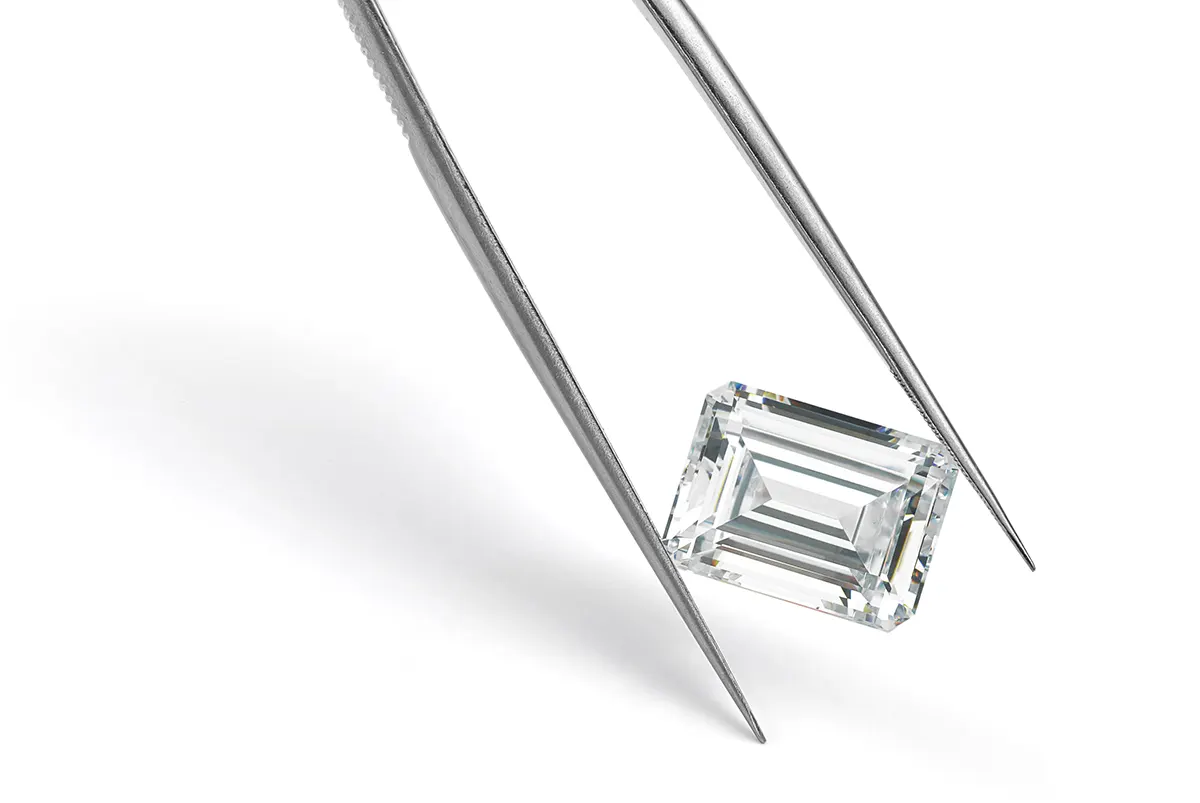
What is an emerald cut diamond?
Rectangular in shape and with concentric rows of elongated facets emerald cut diamonds are sought after for their unconventional shape and eye-catching depth. The light play in an emerald cut is different than the sparkle of a round diamond because the linear facets create flashes of white and colored light - an effect known as the 'Hall of Mirrors'.
As well as linear facets, emerald cuts are characterized by beveled corners. Both of these features come from this cut's origins back in the 1500's when it was originally developed for cutting - you guessed it - green emeralds. Emeralds are brittle and more often have inclusions, and the long facets are more in tune with the way emeralds are formed, reducing the risk of chips and breaks during and after cutting. Chopping the corners off also protects the otherwise vulnerable points. Over the centuries as the cut was refined it became popular for diamond cutters too. It's long been a sought after diamond shape, and is experiencing increased popularity again for brides seeking something a bit different.
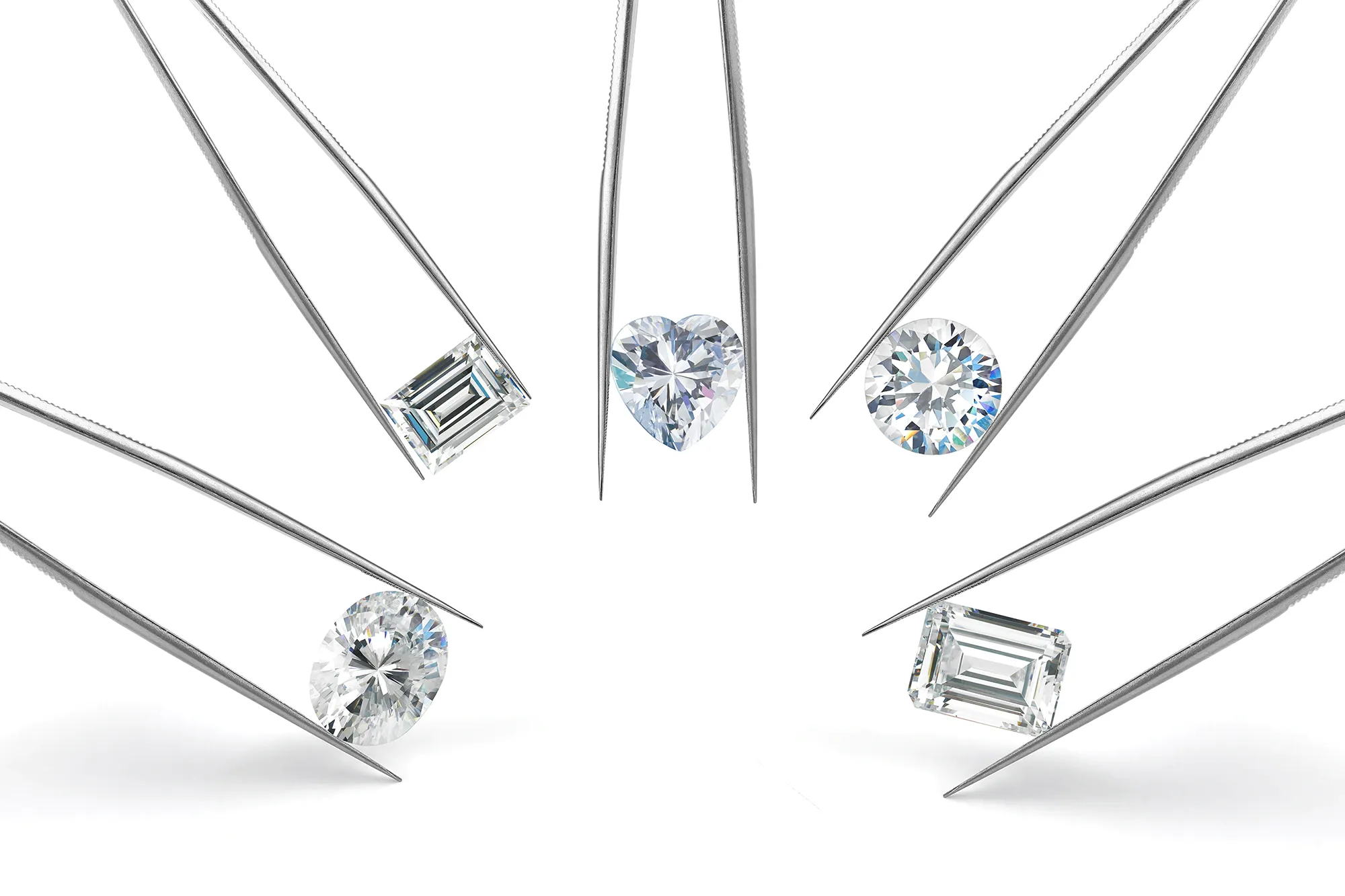
Emerald cuts: shape and length to width ratio
Once you start browsing emerald cut diamonds you'll realize that the shape varies; some are longer and thinner, some broader and squarer. So is there an ideal length to width ratio? Not really. The shape you go for is down to your personal taste, but most people go for something in the middle, with a ratio of around 1.4. This will give a pleasingly balanced rectangle, and a bracket of about 1.3-1.5 is usually given as the ratio to look out for.
The corners of an emerald cut are also an inherent part of its shape appeal. Some have a small amount cropped off the corners like this 1 carat emerald cut from Blue Nile, whilst others have longer corners for a more overtly octagonal outline. Avoid corners that are very small - they compromise the shape and can be tricky to set securely.
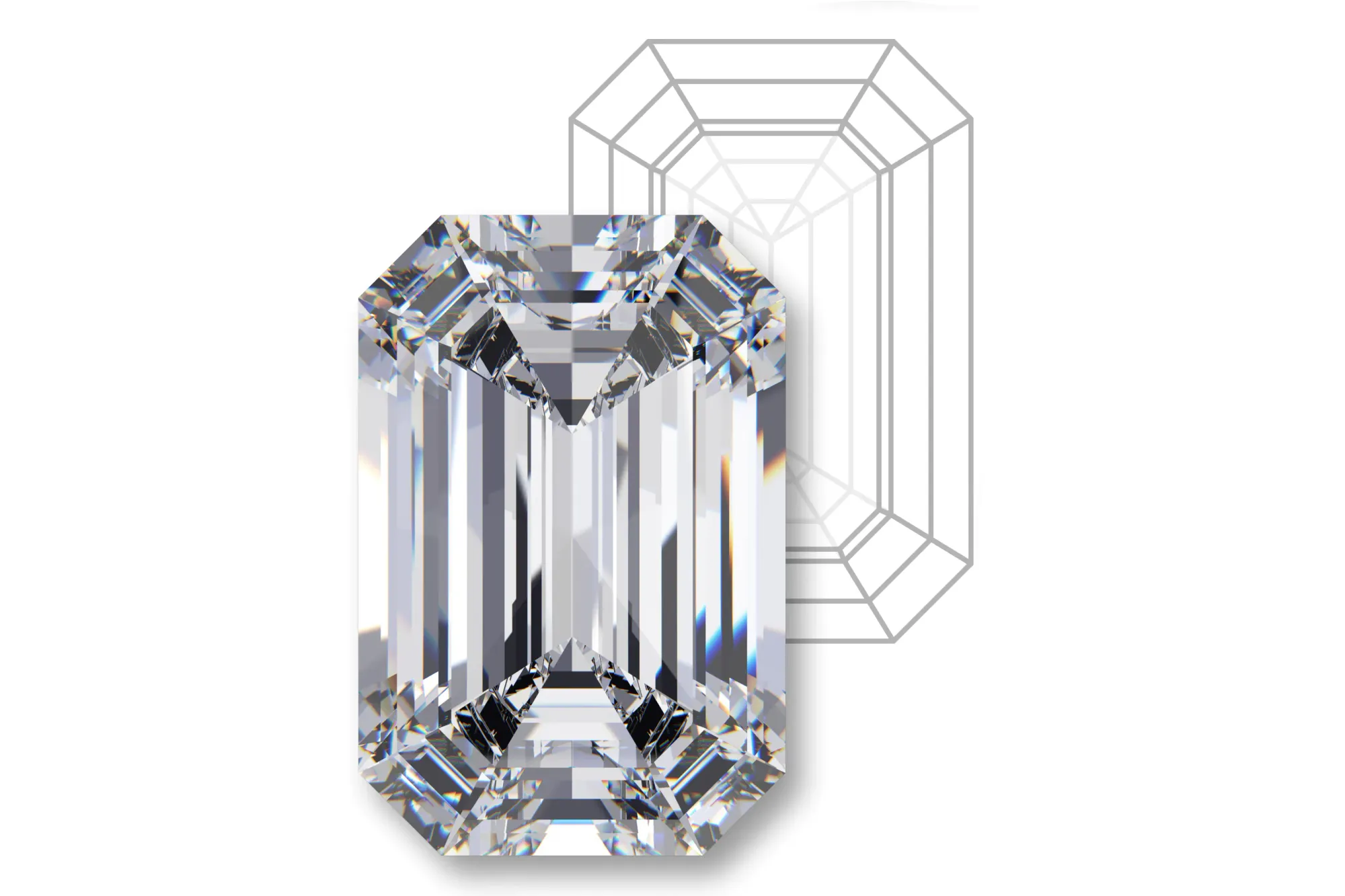
Symmetry is also crucial in an emerald cut - all corners should be cropped evenly and angled symmetrically, and facets on opposite sides need to be parallel. Emeralds are all about sharp geometry!
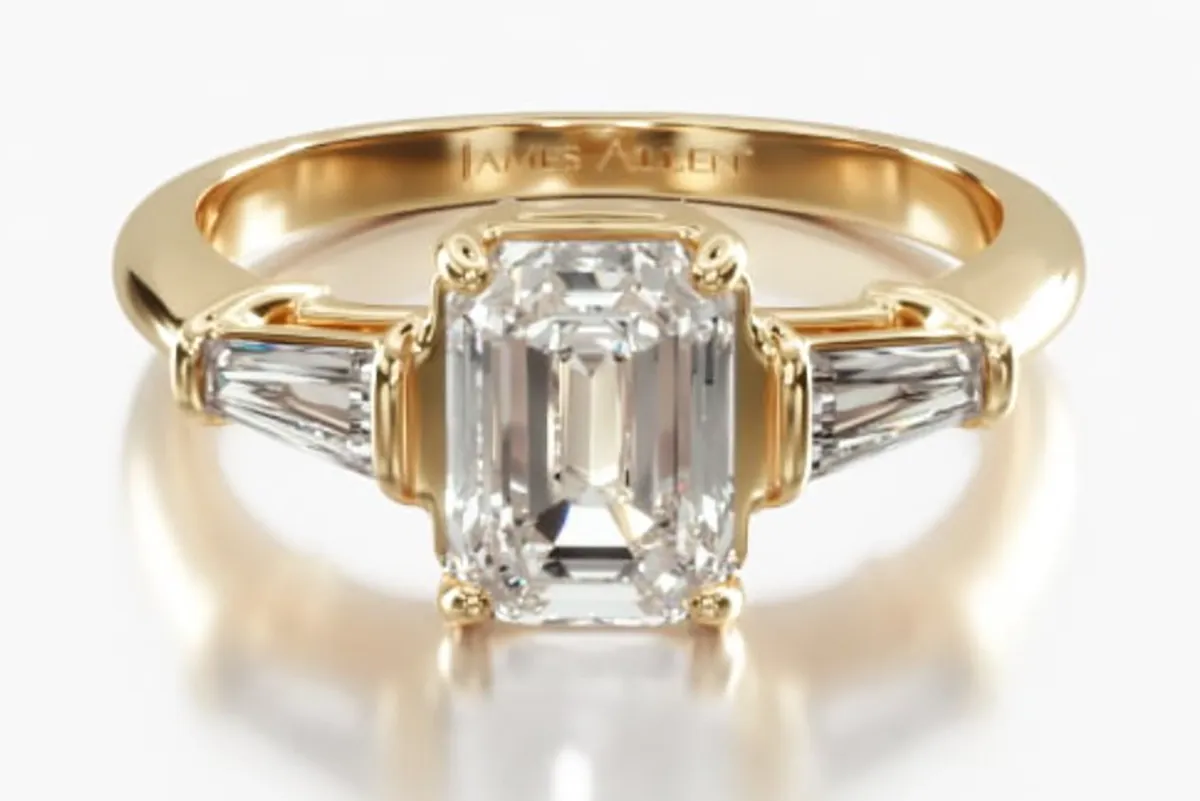
Tapered baguette diamonds support the star of the show. Be sure to choose a setting that does an emerald cut justice.
Emerald cuts: understanding cut quality
A well cut diamond is a must - the quality of cut has the greatest impact on how beautiful a diamond looks. Once you've picked the length to width ratio you like best, focus on the table % and depth %. We recommend a table of 61% - 68% and a depth of 61% - 66%.
Any diamond shape other than the round is classified as a 'fancy shape', and when it comes to fancy shapes like the emerald there is so much variety in cutting style that no 'ideal' proportions can be pinned down. Therefore certification bodies such as the GIA do not grade fancy shapes for cut, as there is no set industry standard. If you see an emerald with a cut grade like 'excellent' or 'very good', it's from the vendor and is not 'official' so treat it as a guide not an absolute.
Despite the lack of certified cut quality, there are still parameters that can act as a rough guide to avoid lifeless duds.
Emerald Cut |
Excellent | Very Good |
|---|---|---|
| Table % | 61% - 68% | 57% - 60% or 69% - 70% |
| Depth % | 61% - 66% | 59% - 60% or 67% - 69% |
| Girdle | Thin - Slightly Thick | Very Thin - Thick |
| Culet | None | Very Small |
Well cut emerald cut diamonds display what's known as the Hall of Mirrors effect, which describes the bold, broad flashes of light moving across the rectilinear facets.
For real life examples, I've selected these two fabulous diamonds, where the proportions play into great light performance...
- This 1.52 carat emerald has a balanced overall shape, a table of 67%, depth of 65.5%, and a medium to slightly thick girdle. As you rotate the diamond, light moves beautifully and evenly across the facets.
- This slightly longer, 2.03 carat emerald has a table of 65%, depth of 64.1% and a medium to slightly thick girdle. Again, the light flashing across the facets is superb.
As well as a couple of examples where poor proportions cause real problems...
- This 1.01 carat emerald is really deep at 72%. Therefore carat weight is hidden in the depth of the diamond and it's also suffering poor light return - notice the 'see through' middle, with no light play?
- This 0.84 carat emerald has large dark areas under the table, which don't then reflect light as they should when you move the diamond around.
Emerald cuts: which clarity grade is best?
The clarity grade for an emerald cut needs to be high. Two of the key characteristics of this cut make inclusions way more obvious than in a brilliant diamond (like a round or princess cut).
- Firstly, the large open table is like a huge window that lets you see deep into the diamond's open facets. This gives emerald cuts mesmerizing depth, but also means that there is no hiding place for flaws or inclusions.
- Secondly, the more dramatic, less twinkly light play of an emerald cut diamond means that flaws and inclusions are easier to see compared to brilliant cuts where the light bounces more busily around the diamond.
These two qualities are fabulous for emphasizing the clarity of a diamond, but it means you need to stick to higher clarity grades to get the most from this particular cut. Clarity grades are assigned based on the quantity, size, position, color and overall affect on the stone of the flaws. You therefore need to keep the VS grades as a baseline - we would recommend VS1 as a bare minimum for an eye-clean diamond, but with some serious (and I mean serious) hunting you may be able to find a good VS2 for better value. The chart below gives an overview of what to expect from each grade category, but we have an in depth page on clarity grading here.

Even within the grade of VS1, you need to check your diamond carefully. I've picked out two 1.5 carat examples below. Both are GIA certified VS1. The first diamond below is graded VS1 because of a feather it's almost impossible to see, and some pin points. The diamond on the right is also VS1 and has obvious dark crystals. I know which one I'd prefer!
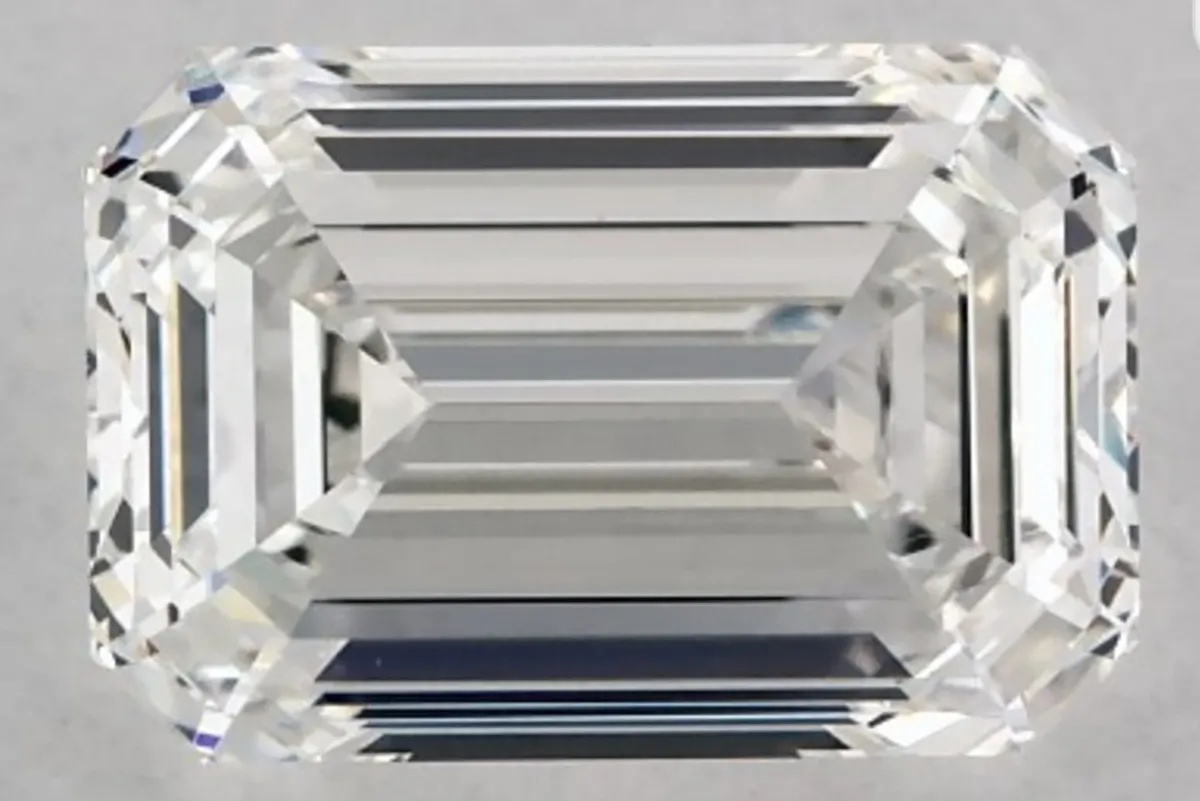
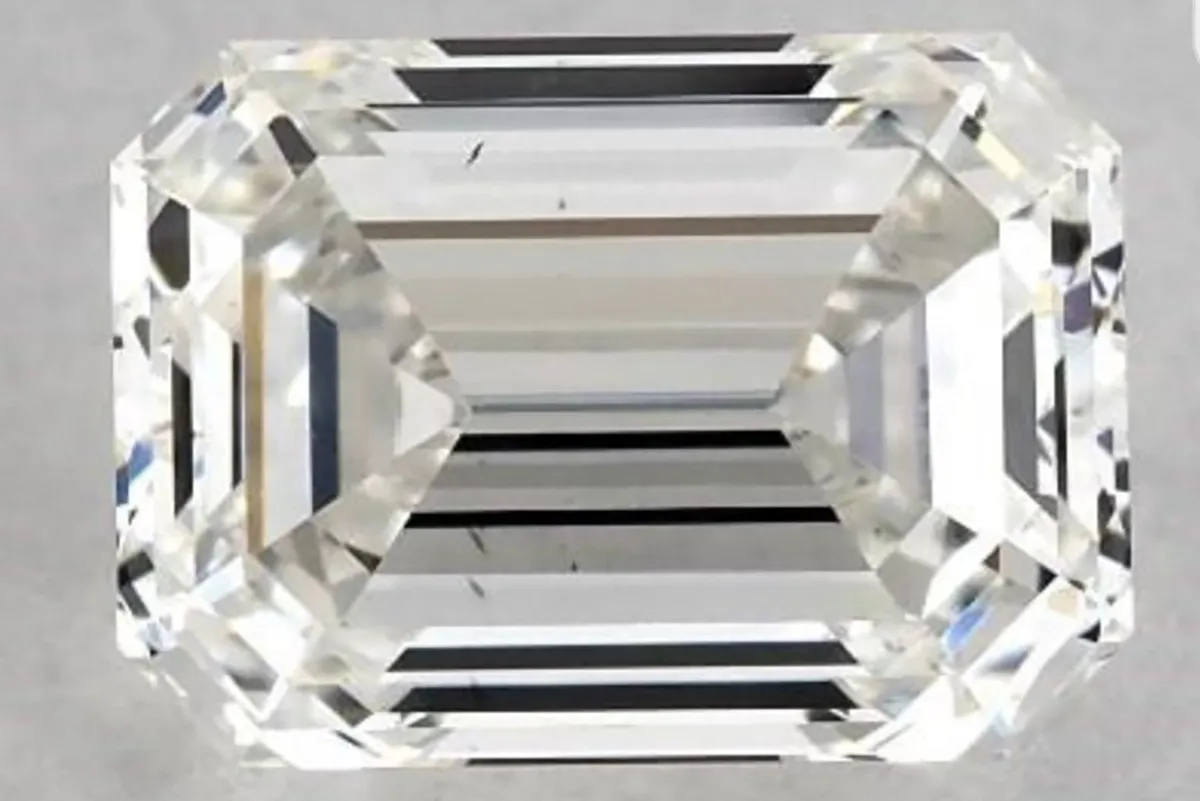
Both these diamonds are graded VS1 by the GIA.
The clarity grade to choose also depends on the size of the diamond you are purchasing - the higher the carat weight, the larger the diamond, and the more obvious flaws will be. For emerald cuts of approaching 2 carats or more we recommend VVS2 as a minimum, to ensure a clean, clear appearance.
And remember - not all flaws are created equal. Large or clustered inclusions in the center of the diamond will be far more visible than those distributed around the edges so when browsing online the images and videos available are an incredibly valuable tool.
Emerald cuts: which color grade?
Choosing a color grade largely depends upon what you are looking for in your diamond. The characteristics outlined above that make inclusions more visible also mean that diamond color is more obvious in an emerald cut. For an icy white diamond you should stick to the higher 'colorless' grades of D - F, but if you like a warmer toned diamond, grades G and H will show a colored tint.
Also consider the engagement ring or other setting; if you're setting your diamond in a yellow or rose gold ring, the warmer tones of a G or H diamond would be set off beautifully and you'll benefit from the warmth of the yellow metal. The rich gold color also creates the slight illusion of a whiter diamond as it creates a visual contrast. Warmer colors also suit vintage style settings for a softer look.
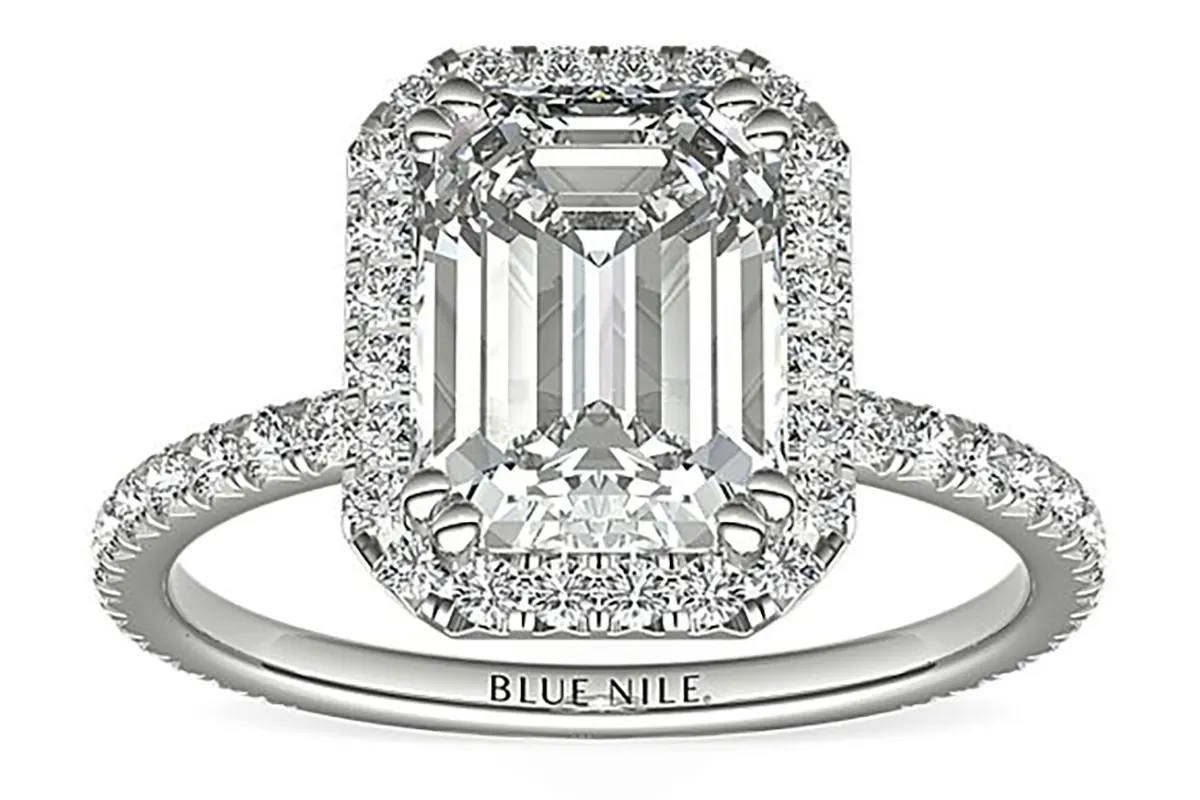
This stunning platinum halo setting is perfect for showing off the clear bold depth of an emerald cut diamond.
If you choose to go for a colorless grade, be sure to set it in a white gold or platinum ring, so that warm yellow light is not reflected into the diamond. A yellow or rose gold setting would negate the colorless grade you've paid for!
Do emerald cut diamonds look bigger?
Yes! Per carat, emerald cuts look bigger than other diamond shapes in part because of the elongated shape, and also because they carry weight in their breadth not depth.
As with all diamonds, the higher the carat weight the larger the look of the diamond. But this is also where knowledge of recommended proportions comes in as we covered above - cut too deep, a diamond not only hides carat weight underneath or in the girdle, but also loses light performance. On the flip side, cut too shallow and your diamond will be wider but duller - and no one wants a dull diamond. That's why we recommend a depth percentage of 61-66%. Great light performance also tricks the eye into seeing a larger stone as there is more to take in.

Emerald cuts: are they more expensive?
Per carat, emerald cut diamonds are cheaper than many other shapes because they are less wasteful to cut. More of the original rough diamond can be retained. Additionally there is far less demand than for, say, a round brilliant engagement ring. Less wastage and less demand = lower cost. But obviously nothing is ever that simple....emerald cut diamonds demand a higher quality in both clarity and color grades. So, if you're comparing like for like in all but shape, emerald engagement rings come out cheaper, but savings are squeezed out when you take color and clarity requirements into account.
Emerald cuts: a summary
You're now well equipped to find the best emerald cut diamond. Set your budget, determine your priorities, stick to the rules for a well cut stone and your engagement ring or diamond jewelry will tick all the boxes for dazzling beauty and timeless style.
- Check the overall shape, looking for symmetry and a pleasing outline.
- Stick to a depth between 61-66% and a table between 61-68% to help identify diamonds that perform. The best display the 'Hall of Mirrors' effect.
- For an eye-clean diamond choose a clarity grade of VS1 or above.
- Opt for color grades D-F for a truly white looking diamond, or lower if you're setting in yellow gold.
Want to compare the merits of an emerald cut to other shapes? Click here to see guides to each diamond shape. And for a more in-depth understanding of the 4Cs, we've got you covered for Cut, Clarity, Color and Carat weight too.

